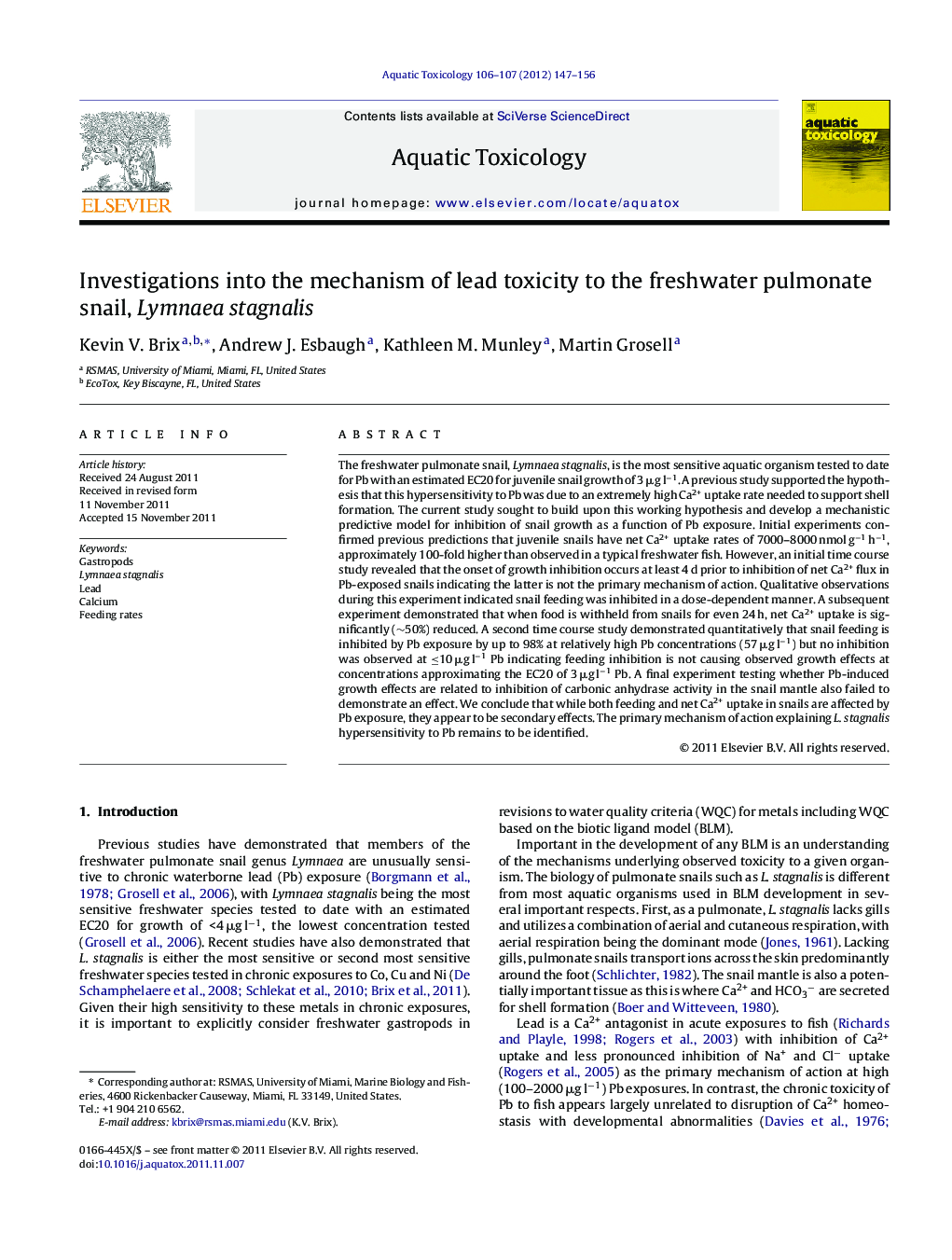| کد مقاله | کد نشریه | سال انتشار | مقاله انگلیسی | نسخه تمام متن |
|---|---|---|---|---|
| 4529796 | 1625981 | 2012 | 10 صفحه PDF | دانلود رایگان |

The freshwater pulmonate snail, Lymnaea stagnalis, is the most sensitive aquatic organism tested to date for Pb with an estimated EC20 for juvenile snail growth of 3 μg l−1. A previous study supported the hypothesis that this hypersensitivity to Pb was due to an extremely high Ca2+ uptake rate needed to support shell formation. The current study sought to build upon this working hypothesis and develop a mechanistic predictive model for inhibition of snail growth as a function of Pb exposure. Initial experiments confirmed previous predictions that juvenile snails have net Ca2+ uptake rates of 7000–8000 nmol g−1 h−1, approximately 100-fold higher than observed in a typical freshwater fish. However, an initial time course study revealed that the onset of growth inhibition occurs at least 4 d prior to inhibition of net Ca2+ flux in Pb-exposed snails indicating the latter is not the primary mechanism of action. Qualitative observations during this experiment indicated snail feeding was inhibited in a dose-dependent manner. A subsequent experiment demonstrated that when food is withheld from snails for even 24 h, net Ca2+ uptake is significantly (∼50%) reduced. A second time course study demonstrated quantitatively that snail feeding is inhibited by Pb exposure by up to 98% at relatively high Pb concentrations (57 μg l−1) but no inhibition was observed at ≤10 μg l−1 Pb indicating feeding inhibition is not causing observed growth effects at concentrations approximating the EC20 of 3 μg l−1 Pb. A final experiment testing whether Pb-induced growth effects are related to inhibition of carbonic anhydrase activity in the snail mantle also failed to demonstrate an effect. We conclude that while both feeding and net Ca2+ uptake in snails are affected by Pb exposure, they appear to be secondary effects. The primary mechanism of action explaining L. stagnalis hypersensitivity to Pb remains to be identified.
► We sought to refine our understanding of Pb toxicity to Lymnaea stagnalis.
► Effects on snail growth are not due to direct inhibition of Ca2+ uptake.
► Effects on snail growth are not due to direct inhibition of feeding.
► The primary mechanism of snail hypersensitivity to Pb remains to be identified.
Journal: Aquatic Toxicology - Volumes 106–107, 15 January 2012, Pages 147–156